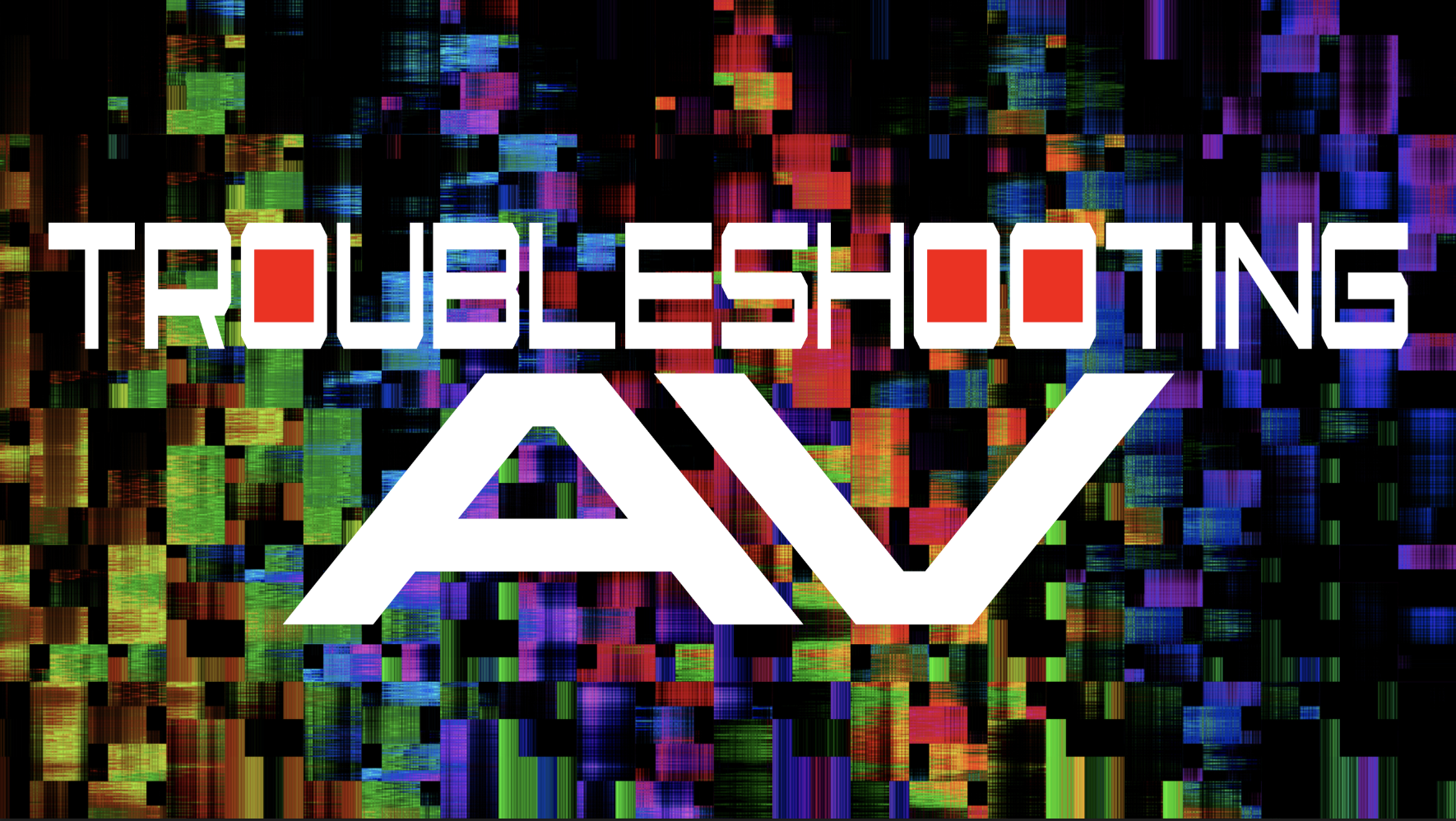The Critical Importance of the Ability to Troubleshoot
Fixing a symptom can be easy; identifying the cause of the issue and effectively addressing it can be a real challenge. While a reboot can appear to be a quick fix, the underlying problem could still be lurking.

The overwhelming trend in technology is that products and systems need to be simple to implement while easy to use in order to be adopted by modern users. Consumers are used to unboxing products, walking through on-screen instructions for setup and configuration, and having confidence that they can "do it themselves" without the help of an expert. This trend is setting the bar not only for personal and home technology, but also for technology in organizations and the workplace.
As we move away from the era of predominately custom integrated and programmed systems—involving a mix of products brought together to form a working solution—to the current focus on simplified, all-in-one, out-of-the-box solutions, there are definitive wins and sacrifices to be considered.
The effort, cost, and inherent complication of integrated and programmed systems are clear and difficult to argue; however, there are factors to consider when working with products that are intentionally closed off and provide minimal insight as to their inner workings or opportunities to make adjustments.
Technology can be easy and smooth sailing when it works, but what happens when it doesn't?
A Tradeoff for Simplicity
When something isn't working right, the ability to truly narrow down the cause and pinpoint where the issue lies is fundamental to properly achieving a resolution.
Steve Greenblatt
One of the tradeoffs of out-of-the-box or plug-and-play products is that they either work as anticipated or they become ineffective due to the limited ability to resolve issues that arise. What starts with simplicity can result in frustration without the ability to clarify and eliminate barriers to making a product or solution work properly.
Amongst the most critical skills that a successful technologist possesses is the ability the troubleshoot effectively. For programmers, this can be more powerful than learning a new software language or being able to write optimal code. The ability to troubleshoot a programming issue, debug lines of code, or eliminate programming as the cause of a problem is critical to any programmer's success. For technicians, troubleshooting is the key to resolving performance issues, addressing service tickets, and fully completing an installation.
When something isn't working right, the ability to truly narrow down the cause and pinpoint where the issue lies is fundamental to properly achieving a resolution. This may seem straightforward, but it may not be as probable as it sounds. The temptation to address symptoms rather than seek remediation is a common occurrence due to impatience or the need for instant gratification; time constraints and pressure to get through a stressful situation; or the trap of being shortsighted—accepting a temporary fix rather remaining determined to find a durable solution.
A daily selection of features, industry news, and analysis for AV/IT professionals. Sign up below.
The Real Challenge for AV Pros
Some of the primary struggles AV professionals face originate from a lack of effective testing and troubleshooting.
Steve Greenblatt
Fixing a symptom can be easy; identifying the cause of the issue and effectively addressing it can be a real challenge. What is important to realize is that problems that are not properly resolved are likely to resurface, causing further havoc and frustration.
Some of the primary struggles AV professionals face originate from a lack of effective testing and troubleshooting. For some, testing and troubleshooting come naturally, and for others it requires discipline, focus, and a commitment to seeing the process through to completion. Improper or incomplete testing results in lingering persistent issues—causing frustration and loss of client and user confidence, increased project costs, ongoing service calls, and a poor reflection on all involved in a project, including the manufacturers. Manufacturers have the most to lose when something doesn't work properly, as it is their name on the product that users see.
A good example that most everyone can relate to is rebooting a computer or resetting a product that is not functioning properly. While this does close applications, clear memory, and resolve the potential of processor overload—it doesn't provide any direction as to why the issue occurred or how to prevent it from happening again in the future. Additionally, rebooting can become a crutch that provides a false sense of security and can become a tempting elixir for all common problems. Rebooting a product is typically not the answer to making it work consistently. The true goal is understanding what is causing the malfunction in the first place and resolving it so that future reboots are not necessary.
How do you resolve issues without the ability to troubleshoot effectively?
When Reboot Is Not the Answer
The difficulty with products that are meant to work out of the box with auto configuration and "no setup required" is that there is an absence of tools to perform diagnostics and support troubleshooting if they don't work right away or stop working at some point.
Steve Greenblatt
Troubleshooting is a science that is fairly universal. It involves narrowing down an issue and eliminating potential causes by performing a series of specific tests to isolate one variable at a time. In technology, there are two keys to successful troubleshooting: one is the method, and the other is having the tools needed to perform the necessary tests. Examples of these tools include diagnostic software to monitor and analyze device communication; manual operation to step through a setup procedure or configuration process on a granular level and determine where a failure may be occurring; the ability to make adjustments to settings that can be useful in clarify issues and overcoming stumbling blocks; feedback or direction from the product to help narrow down the cause of the issue; and controls to override automation and avoid dead end situations.
[ The Hidden Challenges of AV Control Programming ]
These days, with most products communicating over a network using wired and/or wireless technologies, there are many unknowns or variables that need to be considered—ranging from security settings to firmware versions to environmental conditions. Any one of these items or others could result in a device not working. Without the ability to diagnose and troubleshoot a problem, there is little or no opportunity to adapt to unexpected situations or non-standard conditions and reach a resolution. As a result, there isn't much of a middle ground between success and failure.
Buyer Beware
Minimizing one's ability to troubleshoot is like trying to navigate a forest without a map and compass.
Steve Greenblatt
The difficulty with products that are meant to work out of the box with auto configuration and "no setup required" is that there is an absence of tools to perform diagnostics and support troubleshooting if they don't work right away or stop working at some point. Without the ability to diagnose a problem, or the tools to implement a test procedure, the opportunity to troubleshoot is fairly limited—leaving those with expertise powerless to apply their skills and knowledge to help themselves, the manufacturer, or a client reach the desired outcome of a fully operational solution.
Even though solutions are becoming simpler, less custom, and less effort intensive to implement, AV professionals are relied upon not only to make technology work, but also to provide support when it doesn't. Minimizing one's ability to troubleshoot is like trying to navigate a forest without a map and compass. Clients and specifiers should be aware that although something may be easy to implement and get to work one time—when problems arise, even experts will be limited in what they can do to save the day.
[ How Software Alternatives Can Address Hardware Supply Chain Issues ]
Steve Greenblatt, CTS, is president and founder of Control Concepts, a provider of specialized software and services for the audiovisual industry.

